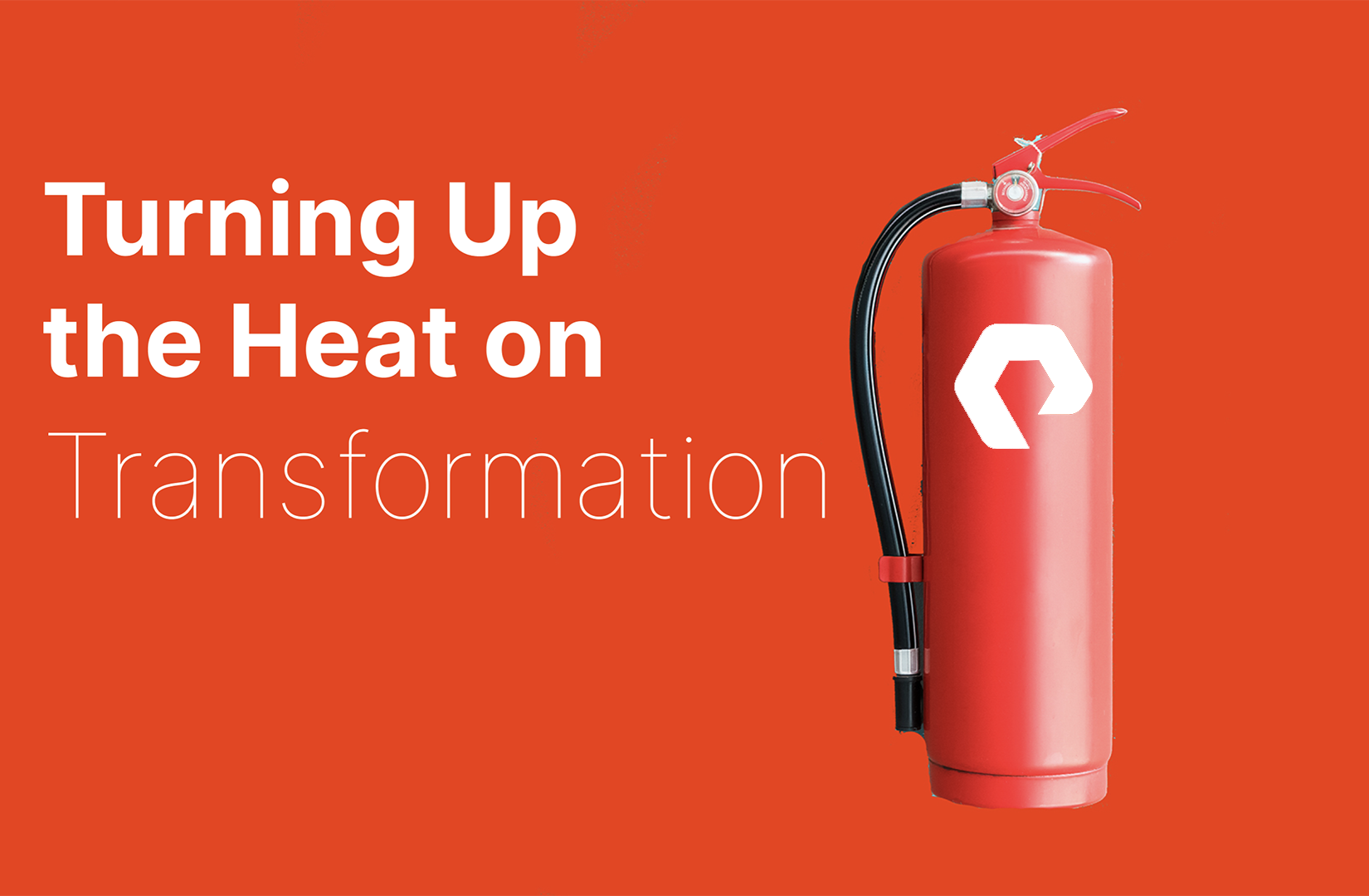There are nearly 30,000 fire departments in the United States, according to recent data from the National Fire Protection Association. These departments, and the more than 1,000,000 career and volunteer firefighters who support them, help to protect about 70% of the U.S. population.¹
You’d be hard-pressed to find people within that population who don’t want their local fire department performing at the top of its game with access to the most up-to-date resources. But increasingly, there’s some must-have “equipment,” beyond fire trucks and turnout gear, that fire departments and their teams need to be agile and effective in the field. That’s data—structured and unstructured.
Like most organizations in the public safety sector, fire departments are under pressure to accelerate digital transformation so they can use data predictively and in real time to improve decision-making, responsiveness, and overall efficiency and performance. They also need new IT infrastructure to support advanced analytics solutions and real-time data sharing. And they must adopt capabilities, like modern data protection, that go hand-in-hand with becoming a more data-driven operation.
One fire service “megatrend” to watch in 2023 and beyond, according to Fire Engineering magazine, is fire departments replacing “archaic data systems” with a “robust interconnected ecosystem, including but not necessarily limited to real-time data transmission, drone feeds, staffing and fire loss data, exposure tracking and outcome, electronic medical records, and linkages.”²
Fire Departments Seek to Control a Burgeoning Data Firestorm
Digital transformation by fire departments is intended to enhance the day-to-day work of these crucial public safety organizations, and not just help them be better prepared to respond to the most serious incidents. In a recent position paper, the Urban Fire Forum-Metro Chiefs emphasized that fire departments and other emergency services should “prepare for increasing data integration into everyday activities. The group also noted that the establishment of more automated data capture and the proliferation of data from all aspects of the fire service is necessary.”³
When you consider just how much and how many types of data that fire departments may need to work with today, and in the future, it becomes clearer why these organizations are feeling a heightened sense of urgency to step up digital transformation and improve data management. Data sources include:
- Community demographic data for risk assessment and response planning
- Geolocation data for incident response and reporting, performance tracking, etc.
- Weather data for enriching incident and response data, enhancing decision-making, etc.
- Incident data for analyzing responses and identifying ways to increase future effectiveness
The incident command technology that many leading fire departments rely on is also data-intensive. For example, computer-aided dispatch (CAD) systems for dispatching and tracking emergency service incidents have very large data sets. These systems provide a wealth of information for planning an effective incident response, including fire hydrant locations, building floor plans, hazardous material listings, and more, that can help keep firefighters, other first responders, and the general public safe.
IoT Sensor Data in Fire Service
And don’t forget the internet of things (IoT), which is yet another source of valuable data for fire service organizations—and one that’s growing exponentially. Applications for smart sensors in fire service include early fire warnings, hazardous source monitoring, on-site situational assessments, and fire safety equipment management,⁴ as well as fire station control of systems, doors, video cameras, and thermostats. (IoT data, which often includes sensitive information like location data, is one more reason that fire departments need modern solutions to safeguard data.)
Looking ahead, fire departments and other first responders will also need to ensure that they’re technologically ready to work with AI-powered technology like AUDREY. Also known as “Assistant for Understanding Data through Reasoning, Extraction, and Synthesis,” AUDREY is a cloud-based platform developed by NASA that helps first responders use data in an emergency to increase situational awareness and communication abilities.⁵ AUDREY connects with personal protective equipment (PPE) sensors and other IoT data, like weather data, through plugin tools. AUDREY can then use that information to create a map of the terrain and give firefighters on the ground warnings and directions.⁶
See this case study to learn how NASA uses Pure Storage as part of digital transformation aimed at driving innovations that keep the agency at the forefront of discovery and exploration.
A Mandate to Modernize to Keep the Public—and Crews—Safer from Wildfires
Another public safety subsector looking to accelerate digital transformation is wildfire firefighting. And wildland firefighters—which include hotshot crews, helitack crews, and smokejumpers⁷—have their hands full in preventing and containing highly unpredictable and often devastating wildfires. In 2022 alone, the United States saw nearly 69,000 wildfires that consumed over 7.5 million acres nationally.⁸
However, state and federal wildland firefighters are challenged in their ability to defend the more than 1.5 billion acres of fire-prone land in the United States. One reason is an overall lack of resources to combat the escalating wildfire problem, including leading-edge technology tools like uncrewed aerial vehicles (UAVs) and other autonomous systems, and AI modeling for predicting wildfires.
In its February 2023 Report to the President: Modernizing Wildland Firefighting to Protect Our Firefighters,⁹ the President’s Council of Advisors on Science and Technology (PCAST) identified several ways the U.S. can use technology and science “to support the needs of today’s wildland firefighters and vulnerable communities nationwide.” PCAST’s recommendations include:
- Immediately assessing, adapting, and fielding currently available technologies, such as mobile area networks, to address vulnerabilities and gaps in wildland firefighter communications, connectivity, and technology interoperability.
- Accelerating enterprise-level development and deployment of new technologies that enhance situational awareness and initial attack capabilities.
- Fast-tracking improvement of predictive wildfire modeling tools by increasing access to archived satellite data from defense and other government resources.
Given that more than 100 million Americans today live in areas threatened by wildfires, and every second counts in an emergency, it’s clear that the need to close what PCAST calls “persistent technology gaps” in wildland firefighting is already urgent.
It’s also a global issue: A recent report from the United Nations projects that the number of wildfires around the world will rise by 50% by 2100.¹⁰ To help prevent fires, the report’s authors recommend that governments around the world move “rapidly” to, among many things, improve data collection and analysis to help monitor changes in fire activity and enhance climate models and ensure that fire services are backed by the appropriate technology and systems, including for fire surveillance and detection.
Pure Storage is proud to be a part of the digital transformation revolution in public safety. Our solutions for unstructured data and analytics provide local governments, public safety departments, and inter-agency coordinators the tools and capabilities they need to save lives and property. Learn more about our solutions here.
Editor’s note: The public safety sector includes five subsectors: fire service, wildland firefighting, law enforcement, emergency medical services, and corrections. This post is the first in a four-part series on digital transformation demands and trends in public safety. Stay tuned for our next installment, which focuses on law enforcement.
¹https://www.nfpa.org/News-and-Research/Data-research-and-tools/Emergency-Responders/US-fire-department-profile
²https://www.fireengineering.com/commentary/fire-service-megatrends-2023-and-beyond/#gref
³https://www.nfpa.org/-/media/Files/Membership/member-sections/Metro-Chiefs/Urban-Fire-Forum/2021/1-Data-Modernization—UFF-Adopted.ashx
⁴https://behrtech.com/blog/3-remarkable-iot-applications-for-fire-safety/
⁵https://www.nasa.gov/feature/jpl/ai-could-be-a-firefighter-s-guardian-angel
⁶https://www.smithsonianmag.com/innovation/nasa-developed-ai-could-help-save-firefighters-lives-180960398
⁷https://www.supplycache.com/blogs/news/different-types-of-wildland-firefighters
⁸https://www.predictiveservices.nifc.gov/intelligence/2022_statssumm/annual_report_2022.pdf
⁹https://www.whitehouse.gov/wp-content/uploads/2023/02/PCAST_Wildfires-Report_Feb2023.pdf
¹⁰https://www.unep.org/resources/report/spreading-wildfire-rising-threat-extraordinary-landscape-fires








